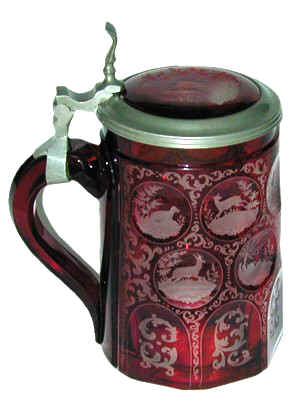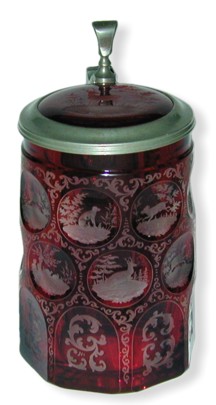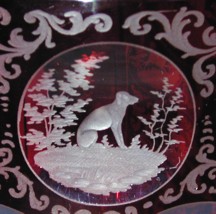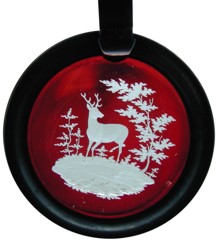
 Stein Collectors International
Stein Collectors International
Featured Stein: February 2006

 Stein Collectors International
Stein Collectors International
Featured Stein: February 2006
~ A Bohemian Stained, Cut and Engraved Glass Stein ~
by Walter B. Vogdes
  |
This colorful glass stein is actually made of clear glass which has been coated with a ruby stain which was then cut away to show the design. It provides a nice lesson in the techniques of cutting and decorating glass.
First the clear glass was blown into a slightly tapered cylindrical shape using soaked wooden paddles or a metal mold to provide the basic shape. The free-formed glass handle was attached while the body was still hot, and then the piece was slowly cooled. At this point it would have been very unimpressive - just a clear glass mug, nothing more.
The first step in decorating this stein was to cut the body and the handle using stone grinding wheels. A series of six arched panels were cut around the lower part of the body. Above those six panels the glass cutter made five circular reserves, and then above these, a row of six more. These reserves would ultimately contain most of the decoration for the stein. To set this area off from the undecorated rear of the stein, a cut was made from the base rim to a point above the handle and then back to the base. This gives the appearance of a padded arch. The upper rim was then cut back to similarly provide an "edge" for the decorated area, while simultaneously reducing the thickness of the rim, making it more comfortable to drink from.

